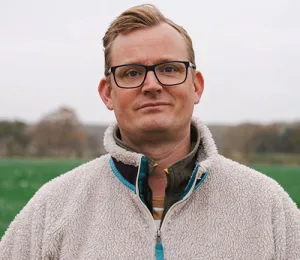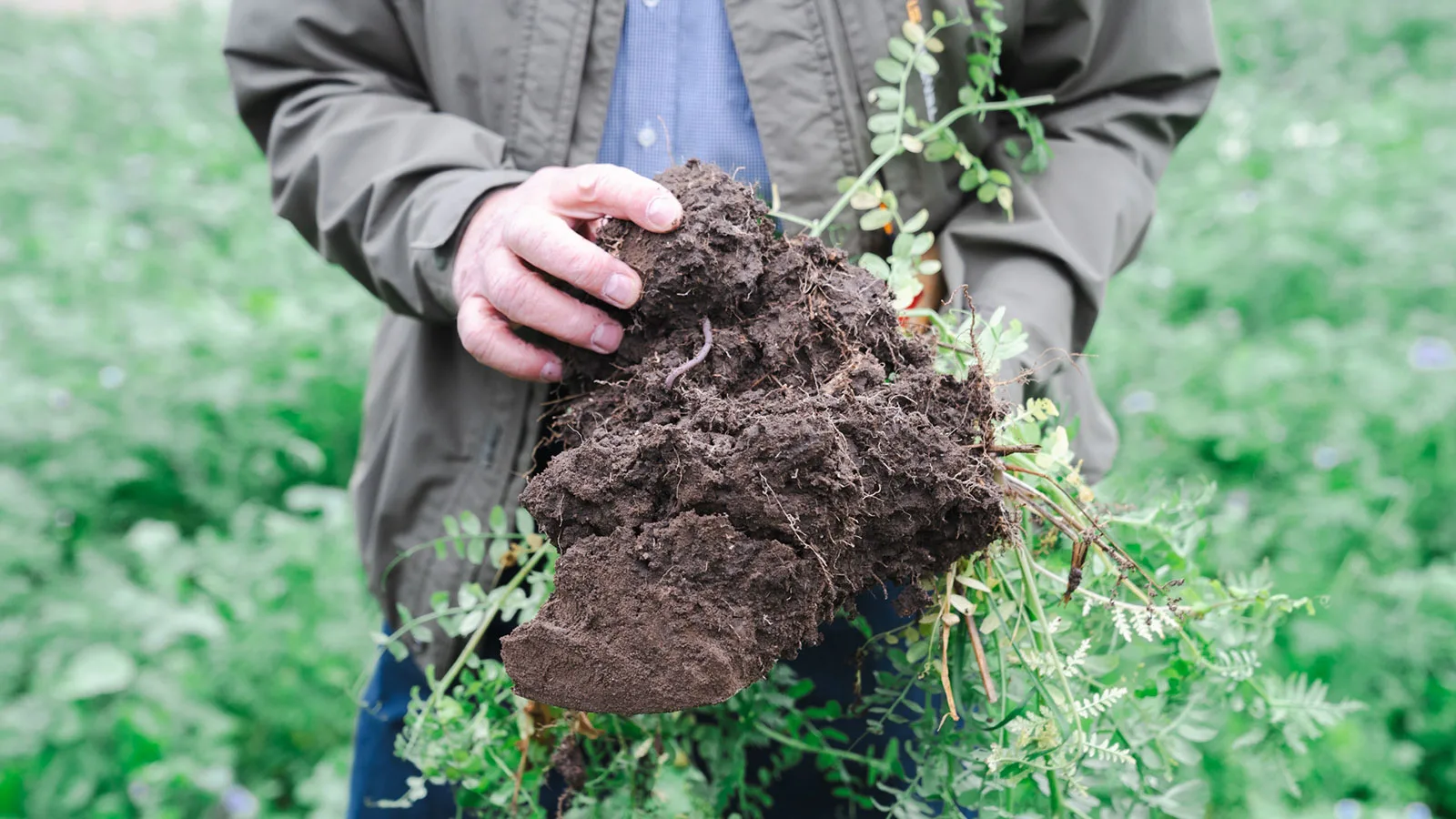This impact story is part of a series featuring companies that are members of One Planet Business for Biodiversity (OP2B)/WBCSD. Through these stories, we aim to showcase our members’ commitment to driving the transition to regenerative agricultural practices, the impact on farmers, and the role OP2B plays in supporting this transformation.
From strategy to soil
Across Europe’s barley fields, Carlsberg Group is redefining the way its beer is grown and sourced. The brewer is putting regenerative agriculture at the heart of its sustainability strategy, aiming for 30% of agricultural raw materials to be sourced regeneratively by 2030 and 100% by 2040. For a company whose carbon footprint is largely tied to farming, this marks a fundamental shift in how it secures its key ingredient.
“If there is one thing that has truly changed in the last 20 years, it is that climate change is no longer a distant threat,” says Simon Boas Hoffmeyer, Vice President for Sustainability and ESG. “We are acting now to build resilience into our value chains, and regenerative agriculture is a cornerstone of that transformation.”

Through its Together Towards ZERO and Beyond programme, Carlsberg has developed six regenerative principles tested with agricultural partners such as Agrovi in Denmark, Ceres Rural in the UK and the Baltic Sea Action Group in Finland. These principles promote crop rotation, continuous soil cover, minimal soil disturbance, reduced synthetic inputs and zero insecticides on malting barley. “It is about protecting the natural capital we depend on: our soil, our water and biodiversity,” Hoffmeyer explains. “The ambition is to move from isolated projects to a systemic approach that benefits both farmers and the planet.”
Testing what works on the ground
Carlsberg’s regenerative journey is gathering pace across its main barley-sourcing regions. The company is turning its principles into practice through pilot programmes in France, Finland and Denmark, each designed to demonstrate that regenerative farming can deliver both economic and agronomic value.
We have learned that regenerative agriculture is not a one-size-fits-all model. It requires local adaptation, strong partnerships and the right incentives for farmers.
– Simon Boas Hoffmeyer, Vice President for Sustainability and ESG
In Finland, Carlsberg’s subsidiary Sinebrychoff has partnered with the Baltic Sea Action Group to source regenerative barley for its annual KOFF Christmas Beer. Working with pioneering farmers who have adopted practices such as minimal tillage, cover cropping and crop rotation, the programme shows how regenerative methods can improve soil health while reducing nutrient runoff into the Baltic Sea. The barley from these farms has been certified as “Baltic Sea-friendly” following rigorous assessment of cultivation practices.
“These pilots have given us valuable insight into what it takes to scale responsibly,” Hoffmeyer says. “Transitioning requires time, technical support and financial certainty, but the long-term gains in soil fertility and climate resilience are clear.”
Denmark: turning regenerative principles into mainstream supply
In Denmark, Carlsberg’s home market, regenerative brewing has moved from pilot fields to commercial reality. The breakthrough came with new partnerships and contracts in Denmark. As part of a launch event, the company also produced a concept-beer brewed entirely from regenerative barley. “We wanted to show what regenerative brewing can look like in practice, from the field to the final product,” says Stig Schneider Johnsen, Senior Sustainability Manager at Carlsberg Denmark.


To make it happen, Carlsberg joined forces with DLG, the farmer-owned cooperative, and Viking Malt, contracting up to 15,000 tonnes of regenerative barley for the coming year, enough to brew around 100 million liters of beer. What began with two pioneering farms in Zealand will soon expand to more than 50 growers across the country.
The farmers we work with are innovators. They demonstrate that healthier soils, lower input costs and stable yields can go hand in hand. Our role is to create stable demand and fair pricing so that more farmers can join.
– Stig Schneider Johnsen, Senior Sustainability Manager
One of these early adopters is Kaare Larsen, a dairy and arable farmer based in Gilleleje, North Sealand. He began experimenting with reduced tillage more than a decade ago.
The improvements to the soil came quickly, and that convinced me to keep pushing further.
– Kaare Larsen, Dairy and Arable Farmer


DLG provides technical support to adopt practices such as continuous ground cover, diverse crop rotations and minimal tillage. “It is a journey that requires patience and collaboration,” Johnsen says, “but the benefits for soil health, water retention and carbon sequestration are already visible.”
Larsen sees the partnership as a catalyst for change. “Having companies like Carlsberg take the lead gives us the confidence to invest and try new methods. Without that kind of commitment, scaling regenerative farming would be much harder,” he says.
The model also encourages collaboration beyond barley. “A regenerative system involves multiple crops,” Johnsen adds. “Creating demand for the entire rotation is essential to make the system viable in the long term.”
Scaling regeneration through collective action
For Carlsberg, transforming food systems toward regeneration is a collective effort. “Advocacy is key,” Hoffmeyer says. “We need policymakers, especially at EU level, to recognise the benefits of regenerative agriculture and reflect them in frameworks such as the Common Agricultural Policy.” Recognising these benefits helps ensure that public funding supports farmers as they transition.
Regenerative agriculture also requires a shared understanding of outcomes and metrics to guide collaboration between public and private actors. “If every company defines and measures regenerative agriculture differently, scalability will be impossible,” Hoffmeyer notes. Through collaboration with OP2B and other platforms like SAI Platform, Carlsberg helps build a shared language for impact. Harmonised metrics enable stakeholders across value chains, from farmers to companies, investors and the public sector, to align on outcomes and make collective investment more effective.
Through OP2B, the company is joining forces with other global businesses to accelerate systemic change. “The cost cannot rest on a single link in the value chain when the whole system benefits,” Hoffmeyer adds. By joining collaborative projects that work across the value chain, Carlsberg and its peers are identifying shared opportunities to support farmers in covering the costs and risks of transition. “The greatest opportunity,” he concludes, “is to turn regenerative agriculture from a niche practice into the new conventional. Once farmers see the benefits, they will inspire others, and that is how real change happens.”
Regenerative agriculture is a critical solution to transform the way we produce food, feed and fibre, benefiting the climate, nature and people. Over the next years, the OP2B coalition will focus on unlocking three strategic key levers to scale up regenerative agriculture: harmonising measurement, fostering collaborations to support farmers’ transition, advocating for supportive policies to create an enabling environment.
